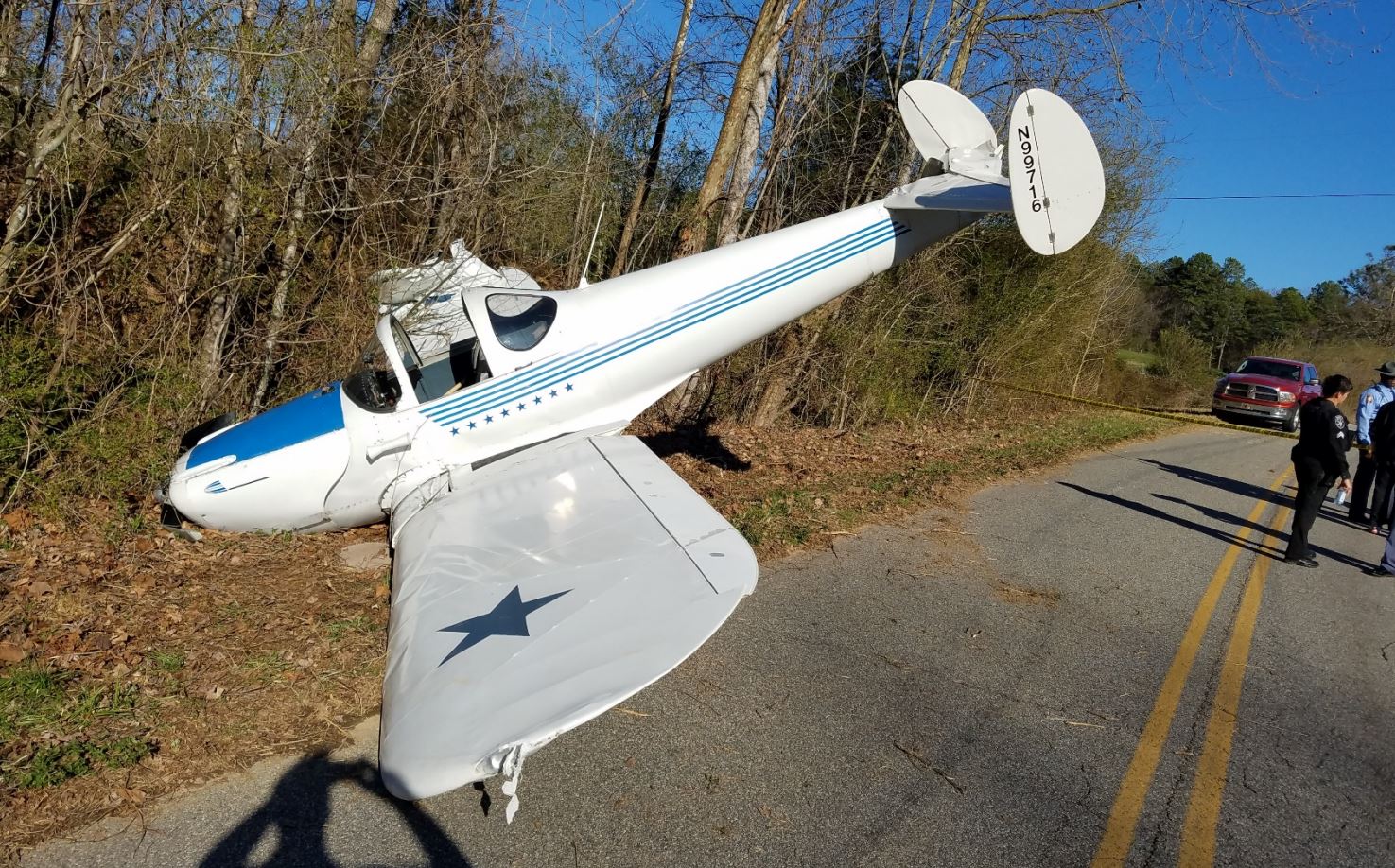
ASN Wikibase Occurrence # 193727
This information is added by users of ASN. Neither ASN nor the Flight Safety Foundation are responsible for the completeness or correctness of this information.
If you feel this information is incomplete or incorrect, you can submit corrected information.
| Date: | Sunday 19 February 2017 |
| Time: | 12:15 |
| Type: |  Ercoupe 415-C |
| Owner/operator: | Private |
| Registration: | N99716 |
| MSN: | 2339 |
| Year of manufacture: | 1946 |
| Total airframe hrs: | 1880 hours |
| Engine model: | Continental C-75-12 |
| Fatalities: | Fatalities: 0 / Occupants: 1 |
| Aircraft damage: | Substantial |
| Category: | Accident |
| Location: | Dawson County, south of Dawsonville, GA -
 United States of America United States of America
|
| Phase: | En route |
| Nature: | Private |
| Departure airport: | Jefferson, GA (JCA) |
| Lafayette, GA (9A5) | |
| Investigating agency: | NTSB |
| Confidence Rating: |
The private pilot recently purchased the airplane and was returning it to his home airport. Before the flight, he added 1/2 quart of oil to the engine, bringing the oil level to between 3 1/2 and 4 quarts. About 30 minutes after departure, the pilot noticed that the oil pressure was dropping. He reduced engine power and turned the airplane toward the closest airport. The oil pressure continued to decrease, even though the engine continued to produce power, and the pilot chose to perform a precautionary landing on a road. Upon touchdown, the airplane skidded across the road until it impacted a tree and came to rest in a ditch. Examination of the engine revealed a hole in the oil sump consistent with impact damage, and oil was noted coming from the crankcase breather tube. In addition, oil was noted on the bottom of the airplane from the nose to the empennage. Even after the oil leaked from the broken oil sump and from the breather tube, the postaccident engine oil level was 3 1/2 quarts.
A subsequent engine run demonstrated that the engine would experience a momentary drop in oil pressure indication if the oil sump was overfilled. The engine and the oil pressure gauge otherwise operated normally. Since the pilot lacked operational experience with the airplane, it is likely that he unintentionally overfilled the oil sump, which resulted in an interaction between the oil in the sump and the rotating crankshaft. The interaction likely resulted in air bubbles becoming entrained in the oil and a subsequent oil pressure fluctuation. Additionally, since he checked the oil level following a previous flight, it was likely that the oil had not fully drained back into the sump when the reading was taken. Considering that the oil pressure gauge operated normally after the accident, it is unlikely that the gauge was producing a faulty reading in flight.
Probable Cause: A decrease in oil pressure due to the pilot's unintentional overfilling of the engine oil sump, and the pilot's subsequent decision to perform an off-airport precautionary landing, which resulted in impact with a tree.
Accident investigation:
 |
|
Sources:
NTSB
FAA register: http://registry.faa.gov/aircraftinquiry/NNum_Results.aspx?NNumbertxt=99716
Location
Images:

Photo: FAA
Revision history:
| Date/time | Contributor | Updates |
|---|---|---|
| 20-Feb-2017 04:06 | Geno | Added |
| 20-Feb-2017 16:53 | Anon. | Updated [Operator] |
| 08-Jul-2018 13:13 | ASN Update Bot | Updated [Time, Departure airport, Destination airport, Source, Narrative] |
| 08-Jul-2018 13:32 | harro | Updated [Source, Narrative, Photo, ] |
Corrections or additions? ... Edit this accident description
The Aviation Safety Network is an exclusive service provided by:


 ©2024 Flight Safety Foundation
©2024 Flight Safety Foundation